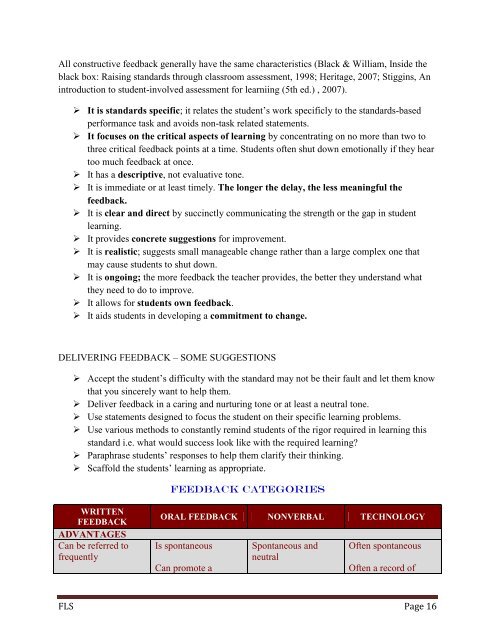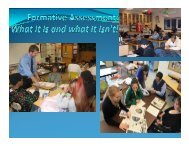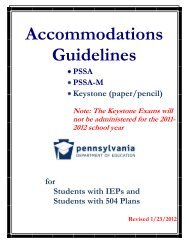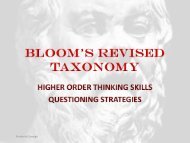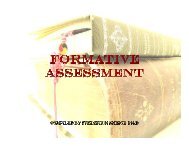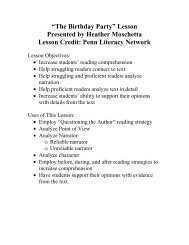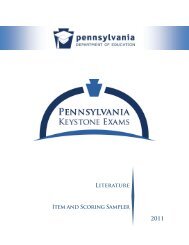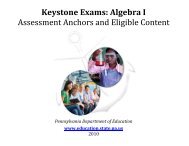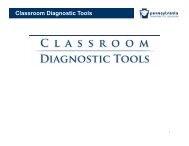FORMATIVE ASSESSMENT (Assessment for learning)
FORMATIVE ASSESSMENT (Assessment for learning)
FORMATIVE ASSESSMENT (Assessment for learning)
You also want an ePaper? Increase the reach of your titles
YUMPU automatically turns print PDFs into web optimized ePapers that Google loves.
All constructive feedback generally have the same characteristics (Black & William, Inside the<br />
black box: Raising standards through classroom assessment, 1998; Heritage, 2007; Stiggins, An<br />
introduction to student-involved assessment <strong>for</strong> learniing (5th ed.) , 2007).<br />
‣ It is standards specific; it relates the student’s work specificly to the standards-based<br />
per<strong>for</strong>mance task and avoids non-task related statements.<br />
‣ It focuses on the critical aspects of <strong>learning</strong> by concentrating on no more than two to<br />
three critical feedback points at a time. Students often shut down emotionally if they hear<br />
too much feedback at once.<br />
‣ It has a descriptive, not evaluative tone.<br />
‣ It is immediate or at least timely. The longer the delay, the less meaningful the<br />
feedback.<br />
‣ It is clear and direct by succinctly communicating the strength or the gap in student<br />
<strong>learning</strong>.<br />
‣ It provides concrete suggestions <strong>for</strong> improvement.<br />
‣ It is realistic; suggests small manageable change rather than a large complex one that<br />
may cause students to shut down.<br />
‣ It is ongoing; the more feedback the teacher provides, the better they understand what<br />
they need to do to improve.<br />
‣ It allows <strong>for</strong> students own feedback.<br />
‣ It aids students in developing a commitment to change.<br />
DELIVERING FEEDBACK – SOME SUGGESTIONS<br />
‣ Accept the student’s difficulty with the standard may not be their fault and let them know<br />
that you sincerely want to help them.<br />
‣ Deliver feedback in a caring and nurturing tone or at least a neutral tone.<br />
‣ Use statements designed to focus the student on their specific <strong>learning</strong> problems.<br />
‣ Use various methods to constantly remind students of the rigor required in <strong>learning</strong> this<br />
standard i.e. what would success look like with the required <strong>learning</strong>?<br />
‣ Paraphrase students’ responses to help them clarify their thinking.<br />
‣ Scaffold the students’ <strong>learning</strong> as appropriate.<br />
FEEDBACK CATEGORIES<br />
WRITTEN<br />
FEEDBACK<br />
ADVANTAGES<br />
Can be referred to<br />
frequently<br />
ORAL FEEDBACK NONVERBAL TECHNOLOGY<br />
Is spontaneous<br />
Can promote a<br />
Spontaneous and<br />
neutral<br />
Often spontaneous<br />
Often a record of<br />
FLS Page 16


